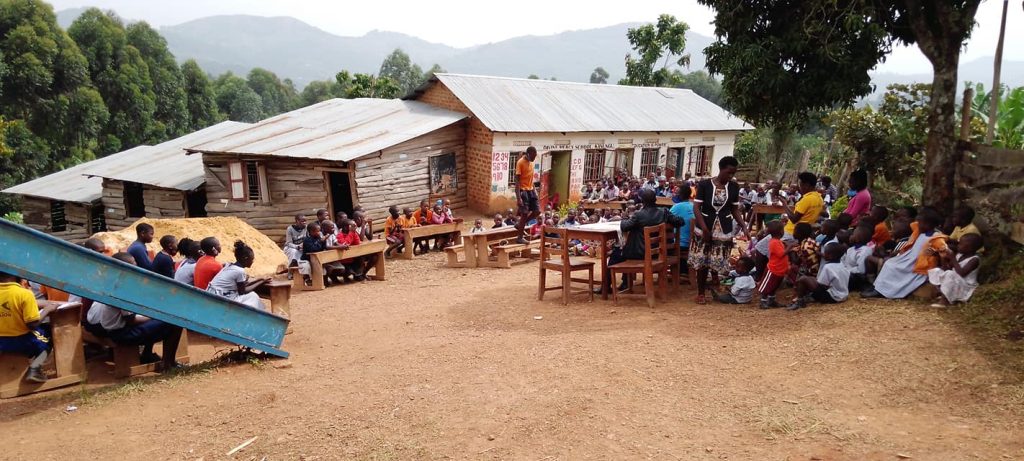School dropout in Uganda is alarmingly high, especially due to lack of lunch for school children and the inability of parents to provide scholastic materials and uniform despite free education provided by government. Nearly 1 in 20 school age children have never enrolled in school, and 60% of those who begin Primary (Year) One dropout before completing Primary Seven.
A high crime rate, teenage pregnancies, and early marriages are among the results with attendant consequences of domestic violence and poor maternal and child health. The situation is worse for orphans and children from economically challenged households.
Kanungu district is among the very poor rural districts of Uganda, which are underserved by government financed social services (mostly education and health). Children of school going age from poor families are unable to go to school simply because they are orphans or are from very poor families which cannot meet the cost of their schooling requirements.
The quality of education given in state owned schools is pretty poor for reasons such as:
- overcrowding in classrooms
- lack of text books and teaching aids,
- lack of lunch for pupils,
- poor government policy of accelerated promotions,
- lack of motivated teachers,
- insufficient supervision of teachers, and
- limited classroom structures.
Divine Mercy School in Kanungu was borne out of a community need to make education accessible to some of the underserved children within the community. Located 423km from Kampala, the capital of Uganda, and 70km from Kabale town, the school is now 5 years old and currently has 219 pupils from kindergarten and form 1-7.

The community served is largely involved in subsistence: rudimentary peasant agriculture on small land holdings. Most households depend on less than a dollar per day. The average household size is 6 while the fertility rate is at over 7 children per woman.
School Fencing Project
Divine Mercy School operates in an open environment: there is no fence nor gate to regulate the entry and exit of people.
This risks the lives of the students and school property to intruders who may vandalise and damage them. Keeping the students inside the school is also a challenge since there is no restricted entry or exit.
With a fence around the school and gate, it is anticipated that:
- control of students will be made easy,
- school properties will be safeguarded and
- the children’s lives will be secured.
They have sought funding to erect both a chainlink and a live/green fence around the school, and install a metal gate at the entrance.
This week our Rotary club has transferred the AUD$3,369.65 (approx US$2,120) needed to fund the fences and gate.



